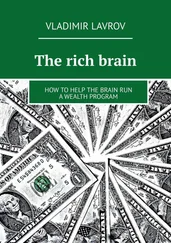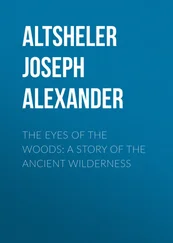One such thunderous silence is Plato’s doctrine of physical bodies. They are, he tells us, composed of geometrical shapes, so that, for example, fire is composed of tetrahedra. 6Did Plato really not know that a point, a line, a triangle, a plane surface, have no volume? That they are abstractions and that the ideal tetrahedron will never be found? That we can spend the rest of time trying to establish the exact line of its perfect edge, just as Achilles will never catch up with the tortoise? Not only the edge but the ideal tetrahedron in its entirety is wholly elusive. What has happened to matter? Where is it? Well, that’s just philosophical idealism for you! It needs to be fixed with materialism!
Let’s try to fix it. Let’s point out to Plato: you have failed to understand, you have failed to notice that there is matter in this tetrahedron we have drawn. There is the wood of the blackboard, the chalk, even the energy used in drawing the lines: these are all material. We find your tetrahedron bewildering, but we do understand chalk on a blackboard (materialism deals with tangible things). But these soon melt away, along with the Platonic solid! The blackboard, the line, the classroom, the ‘solid’, are all clear and easy to understand until we come to mindfulness. When we come to mindfulness, we find, to our amazement, that we must take our leave of metric space, and these material things become no more familiar and comprehensible to us than they would be to someone who was drunk out of their mind. We can have absolutely no doubt that Plato managed to do what we can do: namely, he crossed the threshold of unceasing mindfulness which grinds up the material objects of traditional perception.
Plato’s silence in response to our bewilderment, our indignant ‘Where has matter gone?’ and ‘How can they burn, these ideal tetrahedra nobody has ever seen?’, firstly results from his reluctance to chop logic with us in the delusive space of traditional thinking and, secondly, delivers a message we are not yet ready, not yet mature enough, to hear. In the forest, there is not only indefinability, a superseding of images, a silencing of thought, wonder and horror. There is also geometry. More than that, there is actually nothing there but geometry. There is a sign at the entrance that reads:
‘Anyone Who Has Never Studied Geometry: Keep Out!’ 7Geometry is our introduction to philo-sophy, the love of wisdom.
This is all the more unexpected because the first thing we noticed about the forest, and it is the reason we chose it as the topic for these two semesters, is what it inspires and instils by propelling us out of metric space. Of course, in the forest there is none of the geometry of lines and projections such as get drawn on a blackboard. The ungeometrical nature of the organic was noted some time ago, if by geometry we understand nothing beyond diagrams. So, is there another geometry, and is the forest pushing us out of metric space in order to make us finally understand geo-metry? Geometry as taking the measure of the earth? What would that be? It would be pre-Euclidean geometry, in the sense of not giving Euclid what he is asking for (or demanding) in his postulates and, first and foremost, not accepting his points as something that can be determined or found. Let us again follow the path of our heuristics, of expecting something we already surmise. The point in this early geometry will be Parmenidean and Zenonian, an unattainable focus on precision extending to everything. There is only one point and it coincides with everything. The small difficulty that my work on points in various courses about porosity and Wittgenstein has not been published 8will be put right shortly, so I will not repeat myself, and anybody interested can look up the coincidence of opposites, of the absolute minimum and absolute maximum in a point, in my index to the two-volume collection of the works of Nicholas of Cusa. 9
Given that our concern is not with the problems of geometry, we need go no further than the ‘point’. The more so because the fundamental issue, which we should never have forgotten, is that Euclid asked to be conceded his point, that it was a convention. We conceded it and promptly forgot all about it. The result is that now that point seems to have as much right to exist in reality as a cup of coffee. We ought to have remembered, as Euclid himself always did, that the point on which all his geometry is based is only a convention. That, thank God, was finally recalled in the twentieth century.
Toward the end of the nineteenth century the keenest thinkers in the field of geometry became increasingly concerned about the lack of true rigour in Euclid’s presentation. Undoubtedly, the invention of non-Euclidean geometries did much to spur the search for a correct and complete treatment of classical geometry. The most notable work of the new type was Hilbert’s Grundlagen der Geometrie [Principles of Geometry], published in 1899. 10David Hilbert (1862–1943) began by stating 21 axioms involving six primitive or undefined terms. [Chief among these was the point, Bibikhin. ] He once made a famous comment (not actually published until 1935) to emphasize the importance of keeping the undefined terms totally abstract, that is, devoid of preconceived meaning: ‘One must be able to say at all times – instead of “point, line, and plane” – “tables, chairs, and beer mugs.”’ Such a viewpoint was not widely accepted until well into the twentieth century and, of course, had never occurred to Euclid or his followers. 11
That is a good rule for keeping the debate on the ground. We should take a beer mug and place it on a table that extends as far as another beer mug. This would be the best way to talk until such time as we actually know what a point is, and that becomes less clear every time we encounter one. Up until the present day, the ‘point’, as well as other geometrical terms, has existed only thanks to our ability to grasp and hold an object. It was not the point we could see and hold; all we had was our ability to grasp and hold, and the thing we did that to most often, and with great gusto, we called a point or something derived from a point.
Everything about geometrical constructs is beautiful and indisputable, but the elements of geometry are floating in thin air. The fact that they are mere conventions is blindingly obvious, and they hold true only because people have agreed to believe that they should. In Euclid’s original definition, a point ‘is that which has no part’. The ungraspability of a point is established with a deliberate paradox. I say it was deliberate, because in the classical world it was a commonplace that something that has no parts has nothing with which to have contact with anything else. If it merged with something else, it would add nothing to the whole of that other, or, if it entered as a constituent part of that other, it would rend it apart, because nothing in the other would be able to be in contact with a thing that had no part.
Whether it is easy, difficult, or impossible to obtain a point, the only way it can be done is by concentration. The still unresolved paradoxes of Zeno and Parmenides show that concentration of the mind alone is insufficient. I have no time to repeat what has been said in earlier lectures, and would ask those who are thinking about this for the first time to take on trust, without ifs or buts, that in the most literal manner, in the problem of the point, the basis of geo-metry, we come back to mindfulness. All the observations on the relationship of the point to time, about the point as the present, according to Aristotle and Hegel, which has also been previously discussed in detail, provide the context of what we need now to engage with. Our topic is Plato’s unexpected geometry where we would have expected to find matter, the geo-metry of the forest, the forest as geo-metry without Euclidean metric space. Here is what a modern historian of thought has to say about Plato’s ‘eidetic atomism’, which means that in place of the expected atoms of matter we encounter pure eide: ‘Diese kühne und in ihrer Weise großzügige Theorie der Materie ohne Prinzip der Materie hat weder im Altertum noch später Nachahmung, ja auch nur Verständnis gefunden.’ ‘This bold and, in its way, ambitious theory of matter without the actual principle of matter was not taken up, or even understood, either in classical times or subsequently.’ 12
Читать дальше












